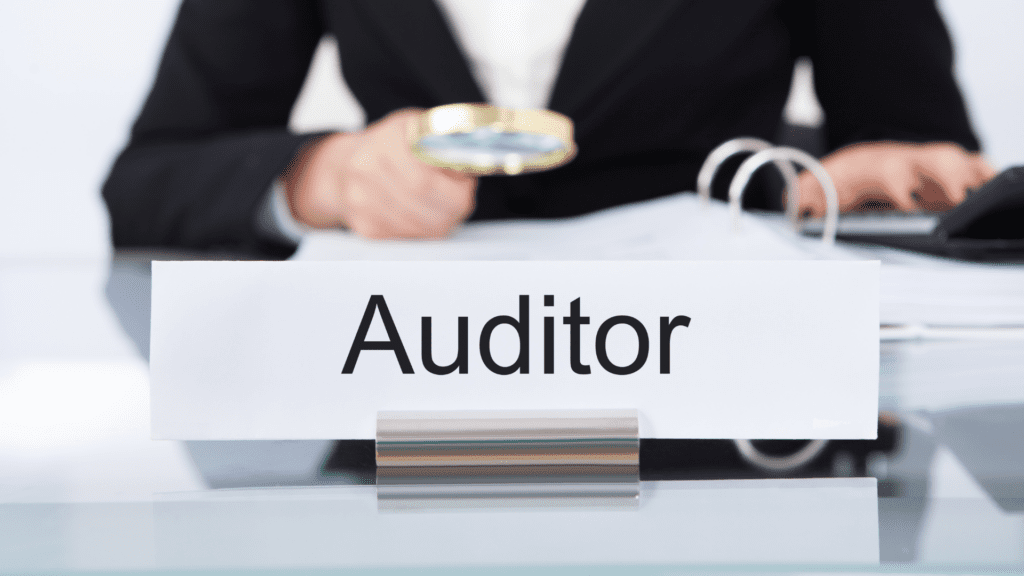
Tim Mektrakarn
April 19, 2024
What is a Bridge Letter?
Continuous adherence to operational compliance and risk management is the cornerstone of a compliance program. When it comes to SOC 2 compliance, demonstrating consistency during audit periods is crucial. A bridge letter helps maintain transparency between organizations and their stakeholders about their security posture when there are gaps in audit periods.
But what exactly is a SOC 2 Bridge Letter, and why is it significant? Let’s delve into the details.
What is a SOC 2 Bridge Letter?
SOC 2 reports are issued for a specific look-back period (typically the previous 12 months), and there can be a gap before the next report is issued. This can be due to a merger or acquisition, a change in the audit period, or even a change in auditor. This gap can leave stakeholders, clients, and potential partners with questions about a company’s compliance during the uncovered period.
A SOC 2 bridge letter, often referred to as a gap letter or interim letter, bridges the gap before the next report is issued. When organizations undergo a SOC 2 audit, the report often doesn’t cover the entire fiscal year. The bridge letter serves as a means to assure these parties that the organization has maintained its systems and controls in alignment with the SOC 2 standards during that gap. Authored by the organization’s service auditor, this letter doesn’t provide the same level of assurance as a SOC 2 report but offers a level of comfort regarding the continuity of practices and controls.
SOC 2 reports are issued for a specific look-back period (typically the previous 12 months), and there can be a gap before the next report is issued. This can be due to a merger or acquisition, change in the audit period, or even a change in auditor. The bridge letter aims to cover this gap by providing insights into whether the controls were operating effectively during this interim period.

Significance of a SOC 2 Bridge Letter
A bridge letter allows your organization to operate effectively and maintain customer confidence during gaps in a report period. Let’s explore a few of the advantages:
- Maintaining Stakeholder Confidence: A SOC 2 bridge letter plays a critical role in maintaining stakeholder confidence. By providing information on the effectiveness of controls during the gap period, stakeholders can continue to have assurance regarding the organization’s security and operational prowess. Bridge Letters are typically written and issued by executive leaders such as the CISO, CTO, CIO, or COO.
- Operational Transparency: Transparency is a cornerstone of robust client-provider relationships. A bridge letter offers a window into the operational workings of an organization, underlining any material changes in the control environment.
- Demonstrating Continuous Compliance: In a regulatory landscape that’s constantly evolving, demonstrating continuous compliance is indispensable. The SOC 2 Bridge Letter serves as evidence that the organization has maintained its control effectiveness even outside the audit periods.
- Mitigating Audit Fatigue: By providing a formal communication regarding control effectiveness during the interim period, a bridge letter can help in mitigating audit fatigue. It acts as a reassurance before the next formal SOC 2 assessment rolls in.

Components of a SOC 2 Bridge Letter
Understanding the contents of a SOC 2 Bridge Letter is essential for businesses and their stakeholders, as it offers insights into the company’s operations during the period covered. Though the specifics might vary based on the organization and its auditor, bridge letters typically cover the following:
Introduction and Purpose:
- Brief overview of what a SOC 2 report is and the need for a bridge letter.
- Explanation of the time frame or gap period the bridge letter covers.
Organization’s Details:
- Name and address of the organization.
- Details of the specific systems or services under consideration.
Date Range:
- Clearly defined start and end dates of the bridge period.
- Reference to the date range of the preceding SOC 2 report.
Auditor’s Statement:
- A statement from the service auditor indicating their role and responsibility in assessing the organization’s controls during the gap period.
- An assertion that the organization has maintained its controls in line with SOC 2 requirements throughout the bridge period.

Limitations and Scope:
- An outline of what the bridge letter does and doesn’t cover in terms of assurance.
- Clarification that the bridge letter does not serve as a replacement for a full SOC 2 report.
Operational Updates (if any):
- A section detailing any significant operational changes, system updates, or incidents during the bridge period that might impact the controls in place.
- Measures taken by the organization to address and mitigate any identified issues or changes.
Conclusion:
- Reiteration of the organization’s commitment to maintaining controls in line with SOC 2 standards.
- Encouragement for stakeholders to review the full SOC 2 report for a comprehensive understanding of the organization’s controls and practices.
Auditor’s Sign-off:
- Formal sign-off by the service auditor, including their name, credentials, and date of the letter issuance.
While the bridge letter provides stakeholders with an interim assurance of the organization’s commitment to SOC 2 standards during the gap period, it’s crucial to note that the letter does not offer the depth of assessment and assurance that a complete SOC 2 report would.

Common Scenarios Where a Bridge Letter is Used
Recognizing the situations where a bridge letter is needed can equip businesses to preempt compliance hitches. Let’s explore a few.
- Changing Service Providers or Auditors: Transitioning between providers or auditors can pose challenges. Bridge letters connect data from old and new entities, ensuring uninterrupted compliance.
- Upgrades or Transitions in Systems and Software: System changes can be disruptive. By employing a bridge letter, businesses ensure that data integrity remains unscathed, and reporting remains consistent.
- End-of-Year Reporting and Start-of-Year Data Continuity: As one year transitions into the next, bridge letters serve as vital tools to ensure that data continuity isn’t compromised, and records remain consistent.

In Conclusion
A Bridge Letter is an integral part of an organization’s compliance documentation. It not only fosters trust but also exemplifies an organization’s commitment to maintaining a robust control environment even amidst the formal audit cycles. The next time you review your vendor’s annual compliance reports, look out for any Bridge Letters or gaps in compliance audit periods.
Security Compliance Services From Bright Defense
Bright Defense delivers contininous cybersecurity compliance services. frameworks. Our team of CISSP and CISA-certified experts will develop and execute security controls to meet common compliance frameworks like SOC 2, CMMC, and HIPAA. Our compliance automation platform helps the cost and complexity of a new SOC report.
Once we’ve built your robust cybersecurity program, we will engage an auditing firm who will deliver the formal audit report. Our compliance automation platform lowers the cost of the audit by as much as 50%.
Contact Bright Defense today to begin your compliance journey!

Frequently Asked Questions
What is the Difference Between a Gap Letter and a Bridge Letter?
While both terms may sometimes be used interchangeably, a gap letter often refers to any communication addressing a period of time not covered by standard documentation. On the other hand, a bridge letter specifically pertains to the period between the end of a SOC report period and the end of an organization’s fiscal year, providing assurances about internal controls during that interim.
Why is the SOC Report Period Important?
The SOC report period denotes the specific timeframe during which a service organization’s internal controls were evaluated by a CPA firm. It provides stakeholders with a window into the organization’s compliance with established standards during that period.
How Long Do Bridge Letters Typically Cover?
Most bridge letters are meant to cover the gap between the end of the SOC reporting period and the close of the organization’s fiscal year. This duration can vary but is typically a few months, ensuring stakeholders that there’s no gap in compliance documentation.
Is a Bridge Letter Valid Indefinitely?
No, a bridge letter serves as an interim assurance between two SOC examinations. Its validity extends only until the release of the actual SOC reports covering the subsequent period or until the next audit.
Are There Standard Bridge Letter Templates?
While there isn’t a one-size-fits-all template, CPA firms often follow a general format when drafting bridge letters. However, the content will vary based on the service organization’s operations and any material changes during the review period.
How Does a Bridge Letter Compare to the Actual SOC Report?
While a bridge letter provides assurance about the continuation of internal controls during the gap, the actual SOC report offers a comprehensive evaluation of those controls over the entire reporting period. The SOC report includes detailed testing results, descriptions of the controls, and the auditor’s opinion on their effectiveness.
What Happens if There Are Significant Changes During the Bridge Period?
If significant changes occur within the service organization during the bridge period, these should be detailed in the bridge letter. These changes could influence the organization’s internal controls and might be a focal point in the next audit window.
How Often is the Auditor’s Opinion Included in the Bridge Letter?
The auditor’s opinion isn’t typically a detailed part of the bridge letter. However, the letter should contain an assertion from the auditor about the continuation of controls during the bridge period. A detailed opinion is reserved for SOC reports.
When Can Stakeholders Expect the Next Audit Report After the Bridge Letter?
After the bridge letter, stakeholders can expect the next audit report to be released after the end date of the period covered by the bridge letter. The next audit report will provide a detailed assessment of the service organization’s internal controls for the entire review period.
Who Benefits from a SOC 2 Gap Assessment?
Many organizations benefit from gap assessments. SaaS providers, managed service providers, cloud service providers, financial organizations, and healthcare providers are typical customers.
Get In Touch



